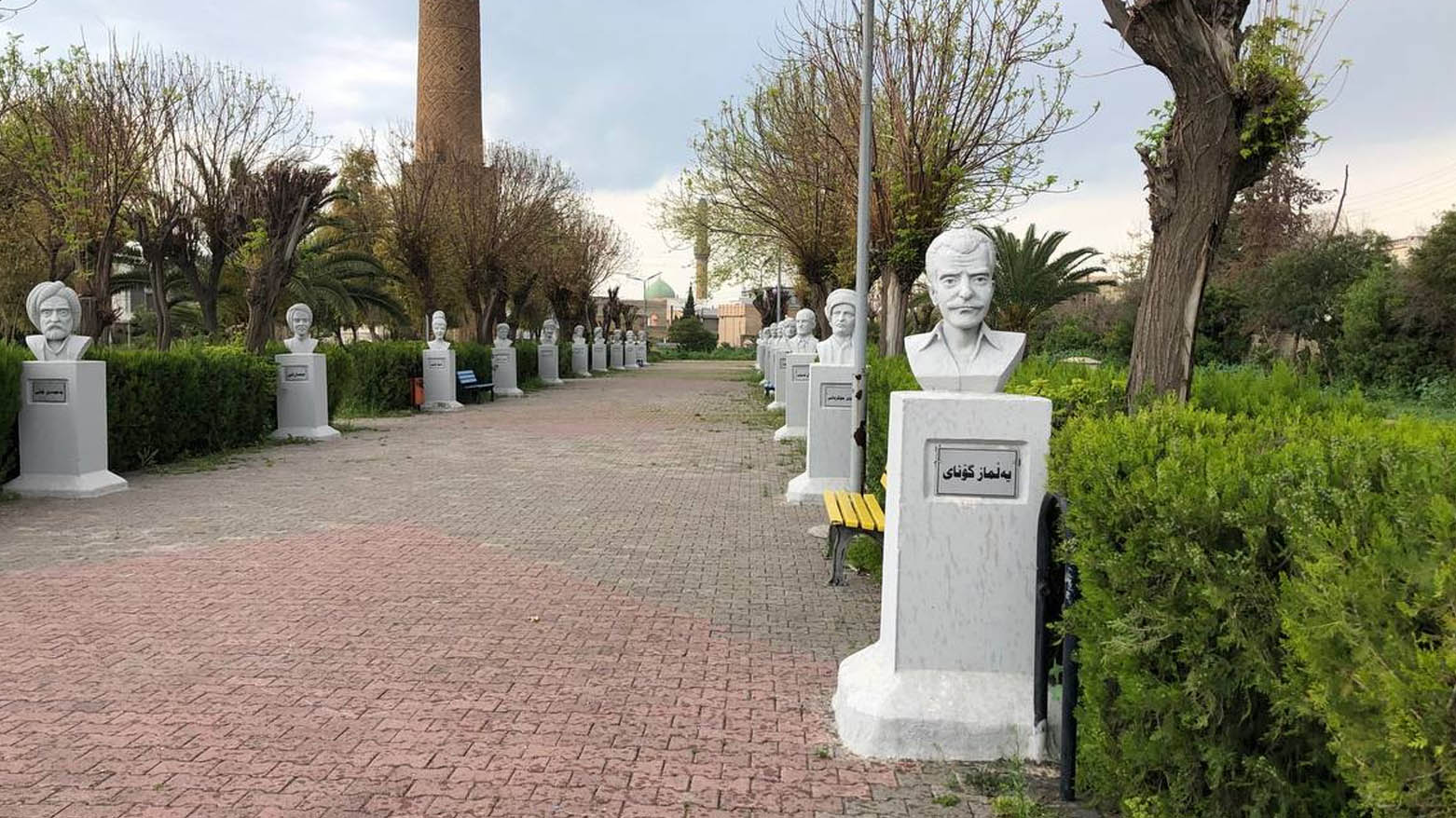Art Immortalized: Statues of Kurdish Cultural Icons Grace Erbil’s Parks
Minara and Shanadar Parks, two of the city’s most beloved public spaces, have become open-air galleries that celebrate the rich cultural legacy of Kurdistan through sculpture.

By Kamaran Aziz
ERBIL (Kurdistan24) – In the green lungs of Erbil—where the rhythm of city life slows to allow for reflection, recreation, and repose—stand dozens of statues that quietly narrate the history of Kurdish creativity.
Minara and Shanadar Parks, two of the city’s most beloved public spaces, have become open-air galleries that celebrate the rich cultural legacy of Kurdistan through sculpture.
According to Sarwar Waisy, spokesperson for the Erbil Directorate of Parks and Gardens, the initiative to honor Kurdish artistic luminaries began in 2012. “To further promote and introduce Kurdish artists and poets,” Waisy told Kurdistan24 on Friday, “statues of numerous Kurdish artists and poets have been erected in Minara and Shanadar Parks over the past several years.”
Currently, Minara Park houses 44 statues, while Shanadar Park is home to two additional figures.
Among the artists commemorated in stone are some of the most prominent voices in Kurdish literature and cinema, including Nali, Bekhod, Mamlê, Hassan Sissawayi, Wafayi, Muhammad Arif, Dildar, Shamerani, Yilmaz Güney, and Givi Mukriani. These figures represent not only aesthetic achievement but political and cultural resistance, each contributing uniquely to Kurdish identity through poetry, prose, or performance.

Minara Park, located on Halabja Street, spans an expansive 85,000 square meters. Overlooking Erbil with a scenic vantage, it has become a vital cultural and recreational hub for local residents and tourists alike, drawing thousands during holidays and festivals. Directly opposite lies Shanadar Park, a more intimate but equally cherished green space, featuring statues including one dedicated to the late Erbil-born artist Ardalan Bakir.
Waisy noted that while the statues stand as permanent reminders of Kurdish cultural endurance, they have not been immune to the passage of time and public exposure. “Many of these statues have been damaged or broken on several occasions,” he said, “so we repair them annually.”
These statues are part of a broader civic effort across Erbil to commemorate Kurdish intellectual and creative history. From poets and playwrights to singers and scholars, the city’s public art reflects a conscious commitment to cultural memory.
In various squares and parks, visitors can also find statues of iconic female freedom fighters and thinkers, embodying the inclusive scope of Kurdish resistance and imagination.
In an age when cultural heritage is often overshadowed by rapid urban development, the parks of Erbil stand as living testaments to the enduring soul of Kurdish art.
Here, under open skies, the voices of generations past are cast in bronze and stone—not as relics of a fading world, but as witnesses to a culture still breathing, still creating, and still resisting.
Kurdistan24's reporter Shorsh Harki contributed to this report.
